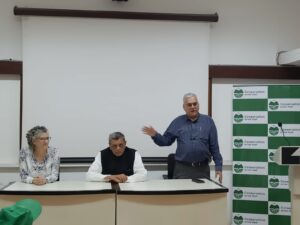Depleting ‘natural capital’
Growth doesn’t always come at a price. But it did when it comes to India’s economic growth, which took a toll on its natural assets like forests, food, clean air, etc. A report on environment accounts released by the Ministry of Statistics and Programme Implementation has revealed this state.
In fact, it says that when the average growth rate of gross state domestic product (GSDP) during 2005-15 for almost all the states was around 7-8 per cent, 11 states registered a decline in their natural capital. While 13 states showed a marginal growth in the range 0-5 per cent, just three states saw their natural capital increase by more than 5 per cent. This model of economic growth may not let the country sustain the rate of development for long.
Monitoring the natural capital is important and should be one of the determiners for sustainable development, says the report. The natural capital is that element which provides valuable goods and services to humans, such as the stock of forests, food, clean air, water, land, minerals, etc.
The natural capital accounting (NCA) method has been used, in this report, to account for income and costs associated with the natural resource used, based on a framework approved by the United Nations in 2012 called the System of Environmental-Economic Accounts (SEEA).
The report also reveals a few positive trends. For example, Andhra Pradesh, Gujarat, Jharkhand, Kerala, Maharashtra, and Odisha show an increase in parameters such as the transition of fallow land to farmland, increase in forest cover along with growing carbon stock and new sources of minerals. It, however, shows alarming effects of climate change, urbanisation, and a decline in forest resource.
Water: Less snow, glaciers, inland and coastal wetlands
Climate change has had a huge impact on water resources. The report shows a 24 per cent decline in the area under snow and glacier in some states and also notes the impact of climate change on wetlands/water bodies in Himachal Pradesh, Sikkim, and Jammu Kashmir.
Moreover, unsustainable extraction of groundwater resources is causing a decline in the water levels in Tamil Nadu, Chhattisgarh, Goa, Odisha, and Rajasthan. Down to Earth’s State of India’s Environment 2018 – In figures had talked about increasing dependency and unsustainable use of groundwater resources. It had revealed that in 2013, the country used 62 per cent of the net available annual groundwater, which is a 58 per cent increase from 2004.
Forest: Reducing stock
In the last 6 years, the rate of growth of forest stock has reduced by more than 10 per cent in almost all states. From 2006-07 to 2010-11, all states, except Goa and Sikkim, have shown such a decline. However, from 2010-11 to 2015-16, even though there was a marginal change in forest cover in Assam and Uttarakhand, growing stock has reduced by more than 10 per cent. But in the case of Jharkhand, Madhya Pradesh, Maharashtra, and Rajasthan, despite a marginal change in forest cover, growing stock has significantly increased by more than 10 per cent.
In the northeast, total growing stock has decreased from 1122.12 million cubic metres (cum) in 2006-07 to 958.34 million cum in 2015-16. Arunachal Pradesh and Assam, which contribute around 58 per cent of growing stock in the northeast, have shown a significant reduction in growing stock within the forest.
The country is dependent on imports of wood and wood products to fulfil its domestic demand. So the growing stock is a crucial forest resource, the decline of which may be a harbinger of trouble for the economy.
Urbanisation
Conversion of agricultural land to meet the needs of the urban population will affect productive capacity. While mentioning the use of agricultural land for urbanisation, the report says that high rate of urban growth is likely to affect a productive capacity in states like Punjab, Haryana, Karnataka, Telangana, and West Bengal.
It calls for better utilisation of land in a sustainable manner to fulfil the demands of a growing population without increasing the degraded land.
To sustainably use natural resources
This first statement on environment accounts strengthens and supports the monitoring of sustainable development goals on zero hunger, sustainable cities and communities, life on land. Several countries are compiling natural capital accounts (NCA) to make economic decision making on natural resources an informed process. They want to use NCA as the basis for compiling indicators to monitor the progress of sustainability policies. India is participating in the Natural Capital Accounting and Valuation of Ecosystem Services project launched by the United Nations Statistics Division (UNSD).
According to MOSPI, this assessment of natural assets is a reminder of how important is a sustainable use of natural resources and is likely to propel India on the path of the compilation of ecosystem accounts. It adds that the Centre and state governments must prioritise actions to conserve and enhance natural capital.
(The views expressed are strictly personal)

